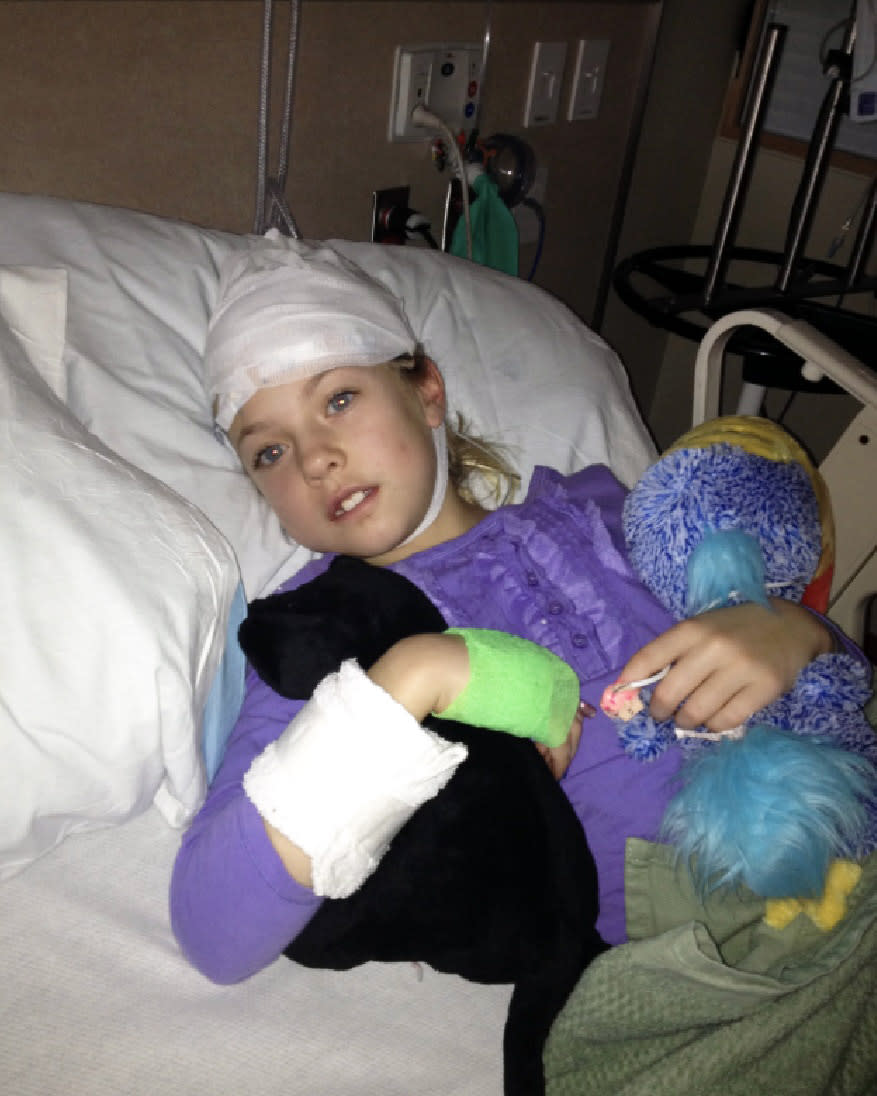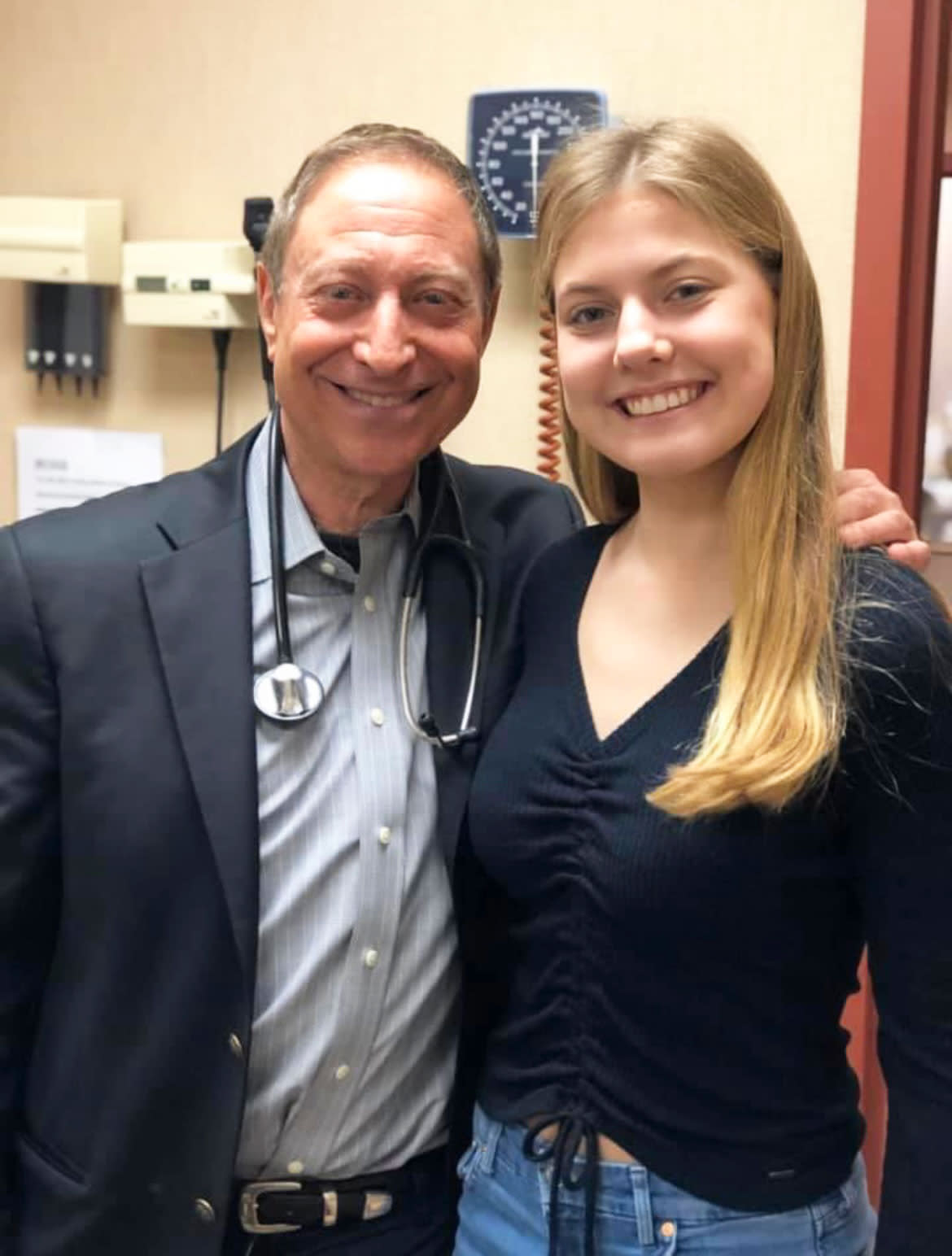At 8, she faced exhaustion and temporary blindness. It took 51 doctors to get a diagnosis
After returning from a vacation at Lake of the Ozarks, Olivia Goodreau found herself resting her head on her desk at school a lot. At the time, the then 8-year-old wasn’t fully able to articulate what that meant to her parents and teachers.
“I started feeling very behind and slow and I kind of had a feeling that I wasn’t feeling normal or like myself,” the now 18-year-old from Denver tells TODAY.com. “I couldn’t physically keep my head up. I started blacking out and passing out. I started losing my vision. I was tired constantly. I couldn’t concentrate. I couldn’t do any work.”
At first, doctors thought her “abnormally large adenoids” caused her fatigue and removed them. But Goodreau did not improve. She visited 51 doctors over 18 months in the hopes of finding an answer to her symptoms. Some doctors dismissed her, and she was incorrectly diagnosed with conditions, too. Finally, her 51st doctor had an idea of what was causing her debilitating symptoms.
“(My doctor) said ‘I had another patient who had similar-ish symptoms and they ended up having Lyme disease,” Goodreau recalls. “That one idea led me to having a Lyme disease test.”

Strange symptoms, no answers
After undergoing surgery to have her adenoids removed, some of Goodreau’s symptoms worsened. In second grade, she experienced temporary blindness.
“My second-grade teacher actually saw me physically go blind for a moment,” she says. “She realized that it was a lot worse than I had been letting on and she contacted my parents and was like, ‘Listen, something is really wrong.’”
That’s when Goodreau started visiting doctors. One suggested that Goodreau simply needed to drink more water. Another doctor thought she had Wilson’s disease until the genetic testing showed she did not.
“I had CT scans, liver biopsies, upper, lower endoscopies,” she says. “The doctors started to believe that I was making it up for attention because they couldn’t figure out anything else.”
She and her mom were diagnosed with Munchausen’s syndrome and Munchausen by proxy.
“We were furious. We were lost,” Goodreau says. “We felt like no one was really listening to us.”
They finally visited a 51st doctor and found out that Goodreau had Lyme disease and they had a reason for her health problems. She took 30 days of antibiotics to try to treat it.
“It just got worse and worse from there,” she says. “I was absolutely terrified. I think I was more confused than scared.”
Goodreau never found a tick on her body and she didn’t have a “bullseye” rash — often a telltale sign of Lyme disease — which likely lead to the delay in diagnosis. Still, she felt surprised it took so many doctors’ visits before she was diagnosed.
“They looked at the chart,” she says. “Sometimes they asked me one question and wrote something down.”
After taking the month of antibiotics, Goodreau felt disappointed that her health didn’t improve. She had a doctor who understood Lyme disease who “made sure I was out of hospitals but didn’t make sure I was out of my bed.” She often felt exhausted and experienced brain fog.
“I wasn’t able to go to school for many many days and then maybe one or two days it would be better and then it would be worse,” Goodreau says. “We call those Lyme days because they can happen out of nowhere and they absolutely suck.”
When Goodreau was in sixth grade, she started seeing a new Lyme doctor, Dr. Richard Horowitz, who put her on “86 pills a day for a while” before she started a “double dapsone” treatment prior to freshman year of high school. Treatment included her taking twice the normally prescribed amount of the drug, one that's used to treat skin conditions and Hansen's disease to reduce inflammation and halt bacteria growth. That treatment slashed the number of medications she needed to take. And, she had more good days.
“This is amazing,” she says.

She recently underwent a quadruple dapsone treatment and feels even better and says her doctor said she was in “remission.”
“To hear the word remission after 11 years of having the illness, I wanted to cry,” she says. “I am so glad that I did it.”
Lyme disease in children
Every year, about 476,000 people get Lyme disease in the United States and the two groups with the highest infection rates are children and adults over 55, says Dr. Charlotte Mao, pediatric infectious disease physician at the Dean Center for Tick Borne Illnesses at Spaulding Rehabilitation Hospital, tells TODAY.com.
“Children are disproportionately affected by Lyme disease probably because they’re playing outdoors, rolling around in the grass and nature,” Mao says. “Children to have the same kind of typical symptoms as adults but there are some that are more unique to kids.”
Symptoms include:
Bullseye rash
Fatigue
Swollen joints, especially the knee
Headaches
Bell’s palsy
Dysautonomia
Severe constipation
Irritability
Blurry vision
“Unique to kids I would say is declining school performance because of neurocognitive issues, and they just aren’t feeling well,” Mao says. “They have so much fatigue and malaise.”
Treatment for children with Lyme is similar to treatment for adults. Patients normally take a course of antibiotics, often doxycycline.
“Doxycycline has potential tooth staining, adverse effects and so historically that was not used in younger children below age 8,” Mao says. “More recent studies have shown that the two standing effects of doxycycline are not as great as in older versions of that class of drug … the American Academy of Pediatrics now recommends that you can use doxycycline for younger children with Lyme disease at least up to 21 days.”
Many patients aren’t immediately diagnosed with Lyme disease and Mao says there are different schools of thought on how to treat children with “persistent symptoms after a standard course of treatment.”
“The standard view is that those persistent symptoms — yes they can exist in a minority of patients — but there is no evidence that they are result of an ongoing active infection,” she says. “There is not evidence to continue treating with antibiotic therapy.”

She notes that some “frontline clinicians” who treat Lyme disagree and believe patients have an active infection that can benefit from “more complex antibiotic regimens.”
As prevention remains essential when it comes to Lyme disease, Mao shares how parents can protect their children from it:
Use sprays that protect from ticks on your body and clothing.
Perform tick checks after spending time outdoors.
If parents find a tick, they can save it for testing for Lyme bacteria and other tick borne co-infections.
Advocating for Lyme disease
At times, living with Lyme disease, an invisible illness, has felt tough for Goodreau.
“When you have Lyme disease, a lot of people don’t believe you. They’ll say, ‘Oh well you look fine.’ ‘You look alright.’ ‘You don’t look sick,’” she says. “As a kid, it’s great to hear and it’s also terrible.”
She says she’d often feel really sick but look fine and that caused many to doubt her diagnosis. That, in part, motivated her to advocate for children with Lyme disease.
“I’ve have met so many kids who played soccer, like I did, or played football, now they’re in a wheelchair,” she says. “Now they’re bedridden. Now they’ve dropped out of school. So, they are actively losing their childhoods.”
At age 12, she founded the nonprofit LivLyme Foundation, which offers funding to scientists researching Lyme disease, awards financial assistance to families with children with Lyme disease and provides education. She also developed two apps, including the TickTracker app that helps users record tick encounters and helps people avoid tick bites. Her memoir, “But She Looks Fine: From Illness to Activism” will be published on May 9.
“Sharing my story gives all these kids an opportunity to make not only themselves aware, but also their parents aware and their doctors aware,” she says. “We can bring enough awareness to where there can be funding taking place, funding given to scientists and companies to find cures, vaccines … treatments, anything that can really help us.”
This article was originally published on TODAY.com
